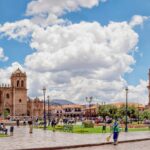1 Day in Lima – How to Spend a Perfect 24 Hours
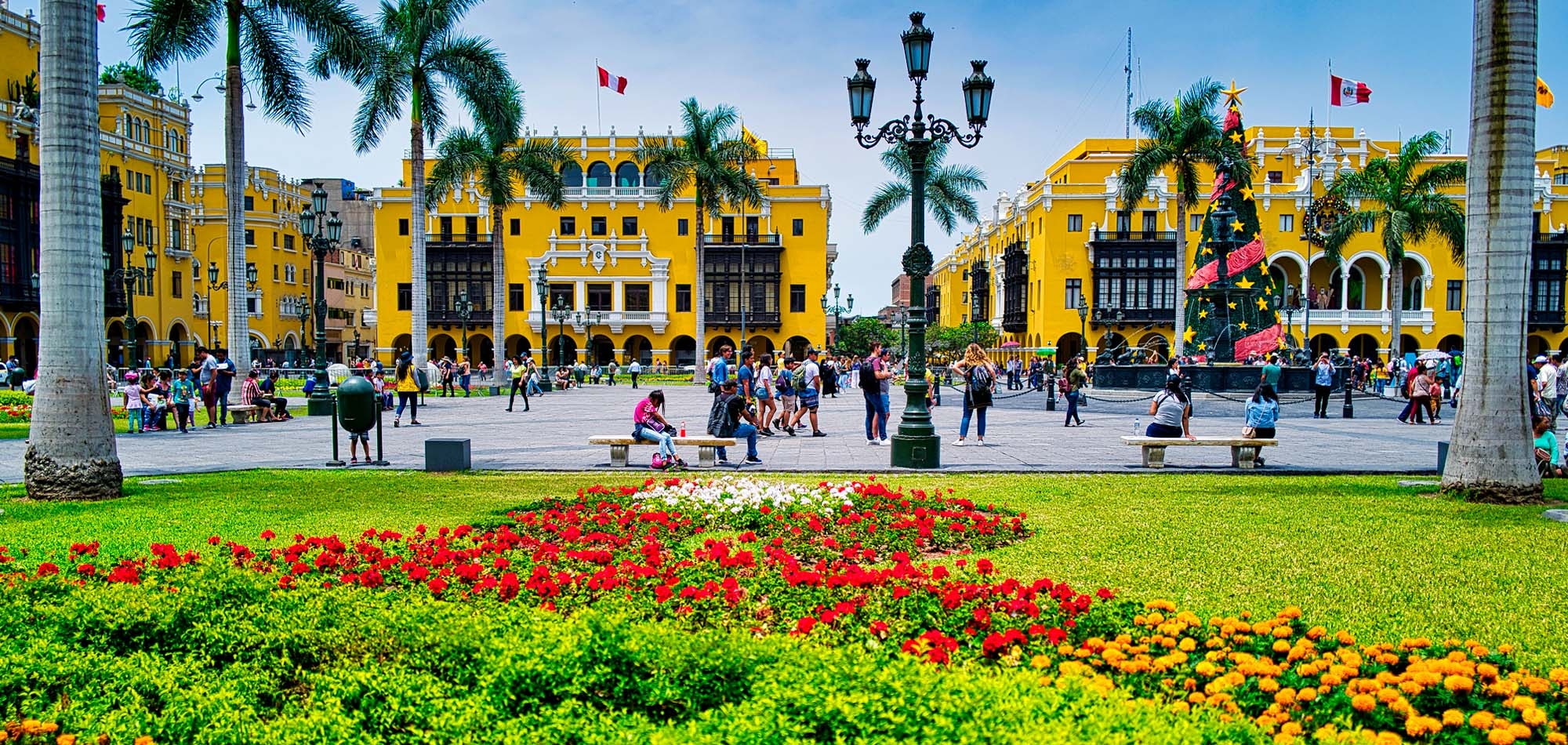
Most travellers who visit Peru will not have much time in Lima. In a country with many highlights, including Macchu Picchu Inca city, Lake Titicaca and the Amazon Jungle, it doesn’t come as a surprise that people often spend as little time as possible in the capital. See the list of What to DO in Lima en 24 hours
Nevertheless, Lima has a lot to offer, and if you want to see Lima in one day, you will have to make clever choices about what to DO, see, visit and what to skip.
With only 24 hours, you can still see a mixture of culture and history while sampling typical Peruvian dishes.
What to DO, See and Visit in 1 day in Lima
1.- Plaza de Armas of Lima
Start your day in the Plaza de Armas in the historic Old Town. This square is the perfect spot to get an introduction to colonial Lima. Here, you can see the Government Palace, the Cathedral of Lima and many other old buildings.
While walking around, you will notice that many buildings are painted yellow. On most days, you won’t see much sunshine in Lima as the weather is typically grey and foggy. While it doesn’t rain much, the haze and fog that creep in every day used to depress locals so much that they painted their buildings a contrasting yellow.
Half a block from the central square, you can find the Monumento a Taulichusco. This rock is the only memory of the Incas that once lived in this valley. Legend says that if you touch the monument, it will refill your energy. So go ahead, gather more energy and then spend a bit more time walking through the streets of the Old Town.
- Duration: 1h
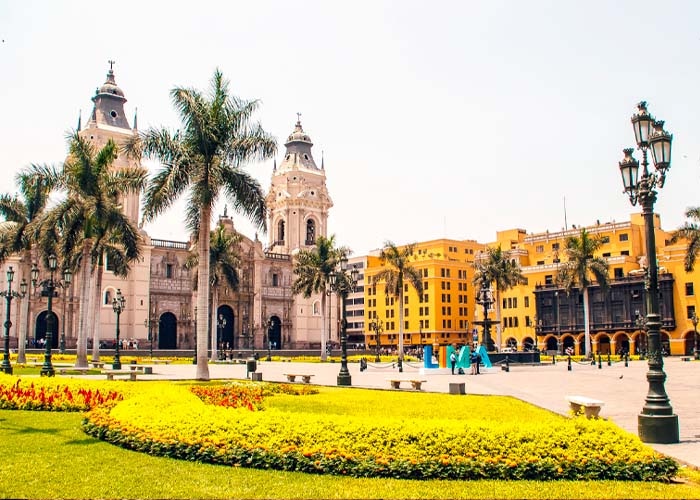
2.- Visit the Catacombs in the Monasterio de San Francisco
While you are in the historic centre, you should stop at the Saint Francis Monastery. We know you only have one day, but take your time to go and visit the interior.
You need to join a guided tour, but you will get a fantastic overview of what a colonial South American convent looked like. Pay special attention to the picture of the Last Supper, which is a replica of a painting you can find in Cusco. Do you see the guinea pig on one of the dinner plates? This small detail is a perfect example of how locals adopted Christianity when Spanish explorers arrived and how they fitted the new religion into their own systems and culture.
While visiting the convent, you have the chance to climb down into the catacombs. These tunnels underneath the monastery once served as the city’s graveyard, and you can see the remains of more than 70,000 people down here. It might sound creepy, but it’s well worth a visit.
Guided tours regularly leave in both Spanish and English, so you shouldn’t have to wait too long until you can go inside.
- Duration: 1- 2h
3.- Learn about pre-Inca times at Huaca Pucllana
Did you know that Peru was home to many cultures other than the Inca? You can see their remains everywhere in the country, from the Nazca people and the Paracas civilisation in the south to the Chan Chan in the north.
If you want to see some of the oldest ruins in South America, as old and partially even older than the Egyptian pyramids, then you should visit Caral. You can easily go here on a day trip from Lima!
The Lima civilisation was one of those pre-Inca cultures, and during your trip to Peru’s capital, you should visit one of their most impressive ruins. Huaca Pucllana once served as an administrative and ceremonial centre, and you can see many remains of the Lima culture here.
Even more interesting, after the fall of the Lima people, the Wari culture, another pre-Inca civilisation, used Huaca Pucllana as a burial site. That means you can learn about yet another pre-Inca culture!
To get here from Monasterio de San Francisco, we recommend that you take a taxi. The ride will take around 20 minutes, depending on traffic conditions. To see Huaca Pucllana, you need to join a guided tour. These leave regularly and will keep you busy for around an hour.
- Duration: 1-2h
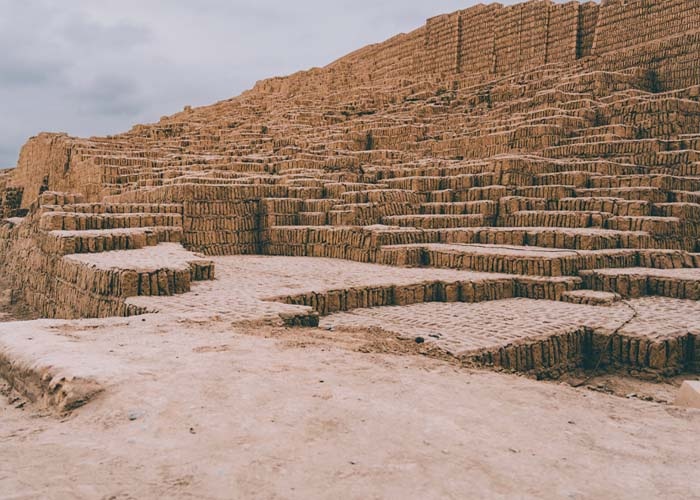
4.- Go for a walk through Miraflores
From Huaca Pucllana, you can either take a taxi for a short ride or walk to the centre of Miraflores.
Miraflores might not be as historically interesting as the city centre, but it is one of Lima’s most touristic areas. Plus, this is where you can find lots of cafes, restaurants and art galleries.
A good starting point is at Parque Kennedy, the cat park. You’ll find street food vendors, lots of restaurants serving traditional Peruvian food and many stray cats here.
From here, walk down to the coast, to Parque del Amor. This park sneaks along the coastline, towering high above the cliffs. During your walk, you can discover lots of interesting statues as well as fantastic views of the Pacific Ocean.
- Duration: 1h
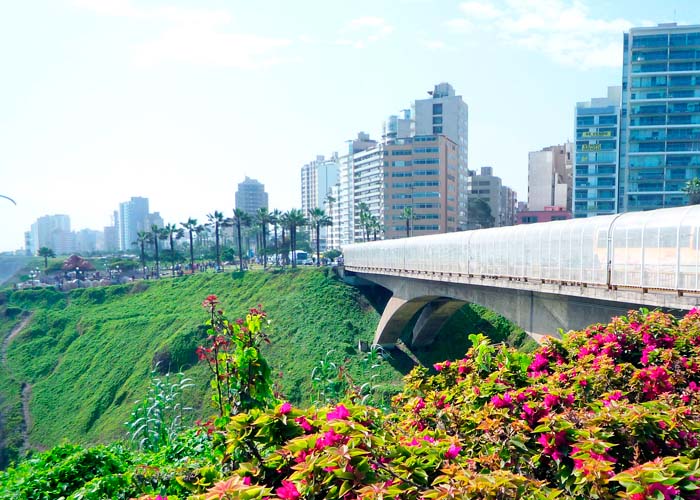
5.- Stop by the Choco Museo
By now, your day is almost over. But before you start thinking about dinner, we have one more stop for you. It’s the Choco Museo, where you can learn everything you’ve ever wanted to know about chocolate.
The Choco Museo is a mixture between a museum, a cafe and a shop. Employees will be happy to explain the process of chocolate production to you. But you can also sample various chocolates, buy gifts for friends and family or sit down in the cafe.
I once participated in a chocolate workshop here. If you have the time, it is definitely worth it as you will learn a lot about chocolate. For now, sample a few different types of the black gold and maybe drink a hot chocolate. But keep in mind that it’s almost dinner time, so don’t fill up too much!
- Duration: 1-2h


6.- Sample Peruvian food
For dinner, we recommend that you stay in Miraflores. You can find lots of restaurants here selling traditional Peruvian food.
Since you only have one day and you are at the coast, the obvious choice would be to get fresh fish. Grab a plate of ceviche, the most typical Peruvian dish which is known even outside the country.
Ceviche consists of raw fish marinated in lime juice, onions and chilli peppers. It can sometimes be slightly spicy but don’t worry. I never found the chillies too overwhelming. As a side dish, you’ll usually get corn, either on the cob, roasted or in the shape of giant corn. I’ve also eaten ceviche with plantain chips or potatoes.
Do you want to learn more about the best dishes to try? Then check out our articles about the best Peruvian food you shouldn’t miss, as well as our favourite Peruvian desserts!
If you don’t like fish, you can try lots of other traditional Peruvian dishes in Lima. Aji de Gallina is one of my favourites; chicken served in a creamy cheese and walnut sauce. The Peruvian chilli, called aji, gives the sauce its typical yellow colour.
Or you can try Lomo Saltado, one of the best examples of Peruvian Chinese fusion cuisine. It’s a stir fry, clearly influenced by Chinese immigrants, that has become one of Peru’s most typical dishes. You’ll eat marinated beef, peppers, tomatoes and lots of other regional vegetables.
While sitting in a restaurant, waiting for your food, you have the chance to try some typical Peruvian drinks. My favourite is Chicha Morada, a drink made from purple corn. It’s sticky sweet, and tastes like cloves and cinnamon. Just be careful not to confuse it with Chicha. Chicha Morada is a purple corn lemonade, while Chicha is corn liquor.
Another drink that you’ll find all over the country is Inca Kola. It’s not my favourite, but it’s worth ordering it once for its radioactive yellow colour.
- Duration: 1 evening

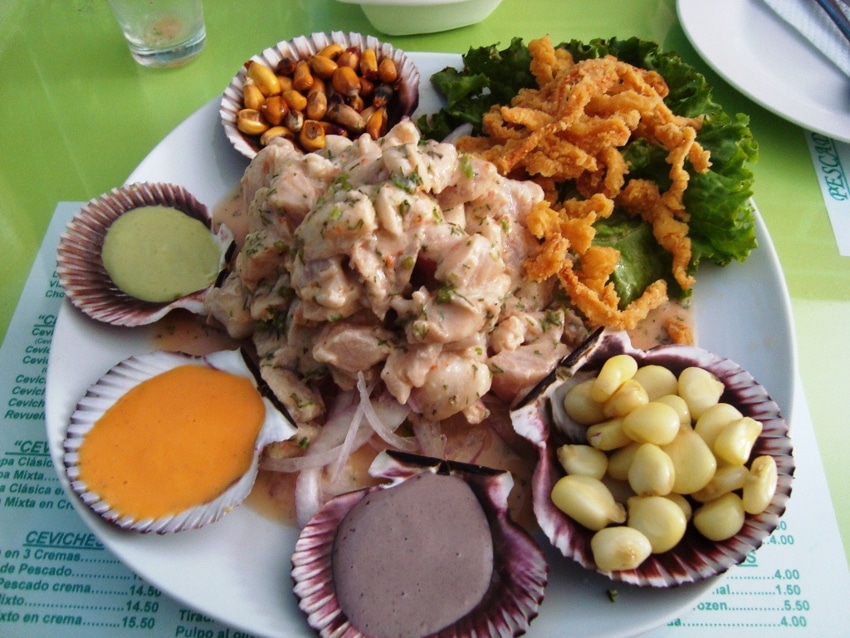
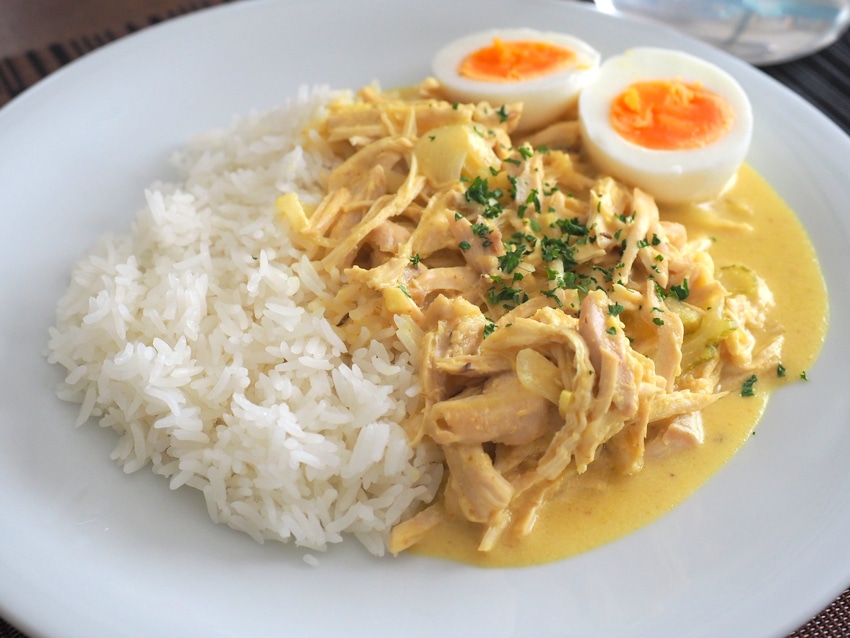
Practical Information for Lima
Where to stay in Lima
If you only have one day in Lima, it makes sense to stay close to the main attractions on this itinerary. That means that you should look for a hotel either in the city centre or in Miraflores.
We highly recommend Miraflores. The old town is excellent during the day, but it becomes a somewhat shady area after sunset. If you’re staying in Miraflores, you can go out even after dark without having to worry too much. That’s why all of our recommendations below are located in this neighbourhood.
Budget: My favourite hostel in Lima is the 151 Backpacker Hostel. I stayed here multiple times before and always loved coming back. The staff was super friendly and helpful. Unfortunately, they seem to be closed at the moment, so we’ve taken a look around to find other great hostels for you.
KACLLA, The Healing Dog Hostel receives excellent reviews. You can find it halfway between the sea and Kennedy Park, so it’s in a super central location, and the atmosphere seems to be unique. As an alternative, you can find Alpes Lima just around the corner, which is perfect if you’re looking for a hostel but want your own private bathroom.
Mid-range: Del Pilar Miraflores Hotel offers clean rooms next to Kennedy Park. Make sure to check out the offers as they often include breakfast! If you prefer having your own kitchen, then check out the apartments at the Atrium Miraflores Hotel. You’ll have all of the amenities that a hotel offers (luggage storage and staff at the reception who can help you with any questions) while having the comfort of your own apartment.
A bit more comfort: If you’re staying in Miraflores, you will have a choice of various lovely hotels. I’ve stayed in the Hotel Antigua Miraflores before, which is super stylish. With its colonial decorations and its many unique rooms, it’s one of the most charming hotels I’ve stayed at in Peru. You can also choose to stay at one of the many international chain hotels. The Four Points by Sheraton, for example, will guarantee that you get an international standard that you’re used to, and it’s in a great location.
Best time to visit Lima
You can visit Lima all year long and have a great time. Your ideal months depend on what temperatures you prefer. If you like hot weather, then you should go at the beginning of the year. January to March are warmest, so warm that at times, sightseeing can get exhausting if you’re not used to the heat.
On the other hand, August to October are the coldest months, and you’ll have to bring a light jacket.
In general, no matter what time of the year you go, expect humid and hazy weather without much rain.
How to get to Lima
The easiest way to get to Lima is by plane. You can book flights from many international airports around the world. One word of advice: Try to avoid booking with Air France. They do not have any ground staff in Lima and are known for “losing” lots of luggage. When this happened to me, a LATAM employee who retrieved my luggage (after Air France had declared it permanently lost) told me that Air France has hundreds of luggage pieces in storage that they never deliver to their owners.
Do you want to be prepared for your flight? Then check out our long-haul flight essentials and pack your hand luggage accordingly.
From the airport, you can travel to Miraflores on the Airport Express Bus. It leaves regularly from both the airport and Miraflores, and you can book your tickets online ahead of time. As of now, this is the cheapest safe option to get to your hotel.
An alternative is taking a taxi. You can find lots of taxis outside the airport, so it shouldn’t be too hard to find one that will take you to your hotel. If you prefer to arrange your transport in advance, then you can book a private airport transfer.
Your last option is taking a public bus. Yes, this will be cheaper than the Airport Express Bus, but we highly recommend against it. The neighbourhoods around Lima airport are not safe, especially not if you arrive there with a lot of luggage looking lost. Plus, the buses will take ages, and you’ll likely have to change your connections along the way. Go with the other two options above, and you’ll be much better off.
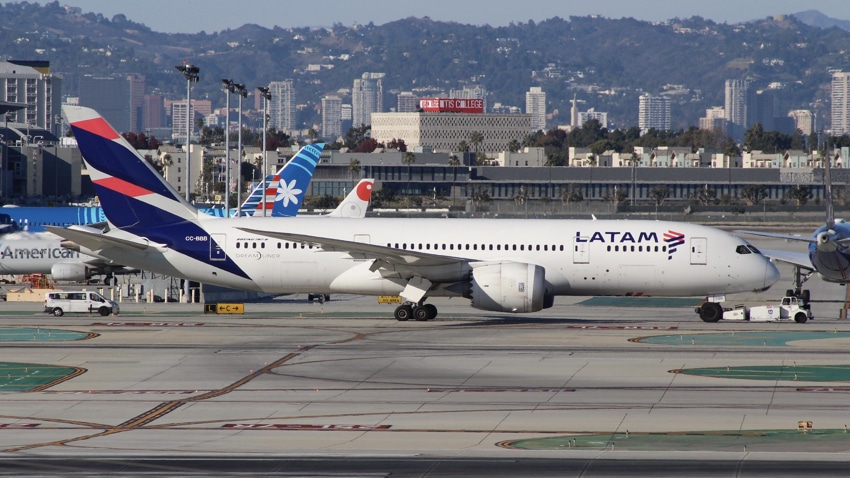
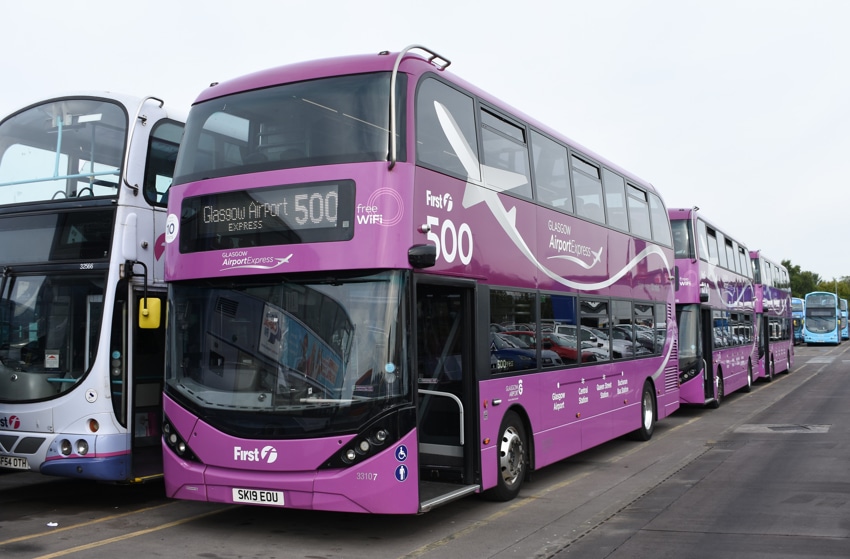
How to get around Lima
If you only have one day in Lima, you should use a taxi to get from the city centre to Miraflores. It’s the fastest way to travel, though don’t be surprised if you get stuck in traffic. Lima turns into one giant traffic jam at rush hour, and advancing might be slow. Nevertheless, you should be able to get from one neighbourhood to another reasonably fast.
We never had any problems hailing a taxi from the street. One of my co-workers, though, got robbed in a taxi in Lima less than one hour after her arrival in the country. Therefore, make sure to put any handbags or backpacks down on the floor. Don’t leave them on your lap where everyone can see them, tempting casual robbers to smash the window and grab your valuables.
When catching a taxi in the street, you need to negotiate a price. If you’re unsure how much to pay, or the prices appear unreasonable, stop two or three taxis to get an idea of how much they charge. As a general guideline, you should pay around 20 – 25 Peruvian soles to get from the city centre to Miraflores.
As an alternative, you can take the Metropolitano. These express busses connect the historic centre with Miraflores and are a cheaper alternative to taking a taxi. The main reason we wouldn’t recommend those if you only have one day in Lima is because the stations are not very close to any tourist attractions.
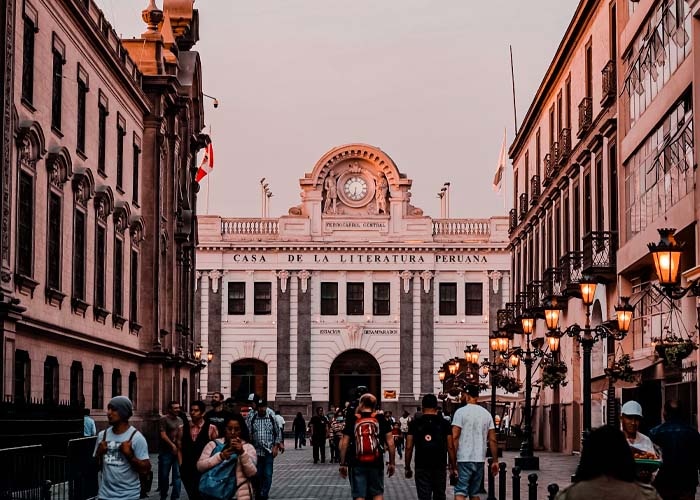
From Plaza de Armas, you will first have to walk to Plaza Grau to get to the Estacion Central. Here, you can then catch a bus to the south. If you’re going to Huaca Pucllana next, the closest stop is Domingo Orue. From here, you will once again have to walk a few blocks before you arrive at your destination.
Taking a taxi will be faster and will allow you to spend less time getting around and more time taking in Lima.
Safety in Lima
Lima doesn’t have the best reputation when it comes to safety, and you wll need to take a few precautions.
That said, I’ve visited Lima many times and have never run into any problems. I’ve never been threatened or robbed, and all the locals I’ve interacted with have always been friendly and helpful.
The best way to ensure that you don’t get robbed is by taking as few valuables as possible. Leave any expensive jewellery and watches at home, as you won’t need them here. Keep your belongings close and have an eye on them, especially when travelling by public transport.
When you sit down in a restaurant, keep your handbag close. Just drop it on your lap or in between your legs, so you notice if someone tries to take it away. Some high-end restaurants offer chains to which you can attach your bags, though I’ve only seen those once and have never had a problem without them.
When travelling in a taxi, store your bag at your feet. Exposing it on your lap will invite casual robbers to smash the window and grab it.
Finally, and this is perhaps the most crucial bit of advice, don’t stress about it too much. If you follow the above rules and common sense, you will be fine. As I said, I’ve been to Lima many times and have never run into any problems or felt unsafe.
Lima is a wonderful city, even if you just have one day. We’re curious to hear from you, especially if you’ve already been here. What did you like best? Do you have any other recommendations? Please leave us a comment below!

